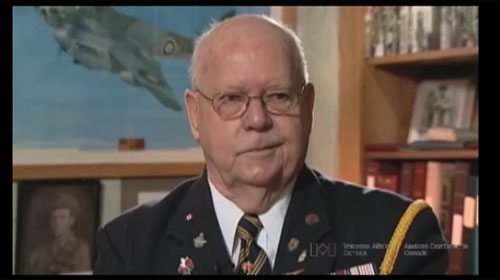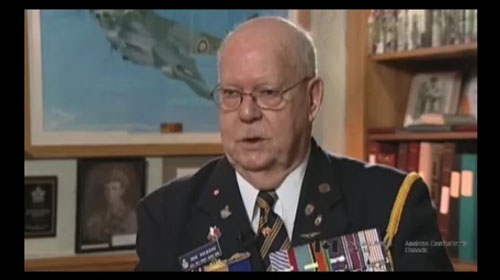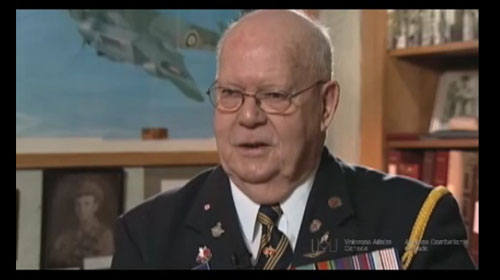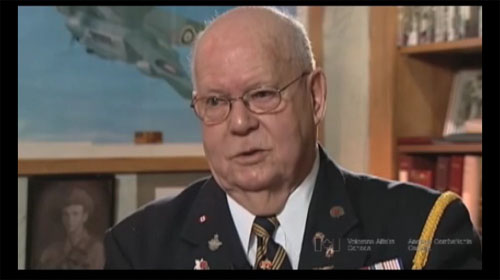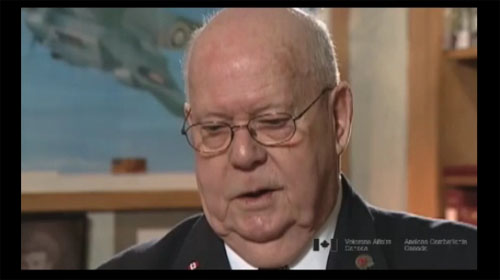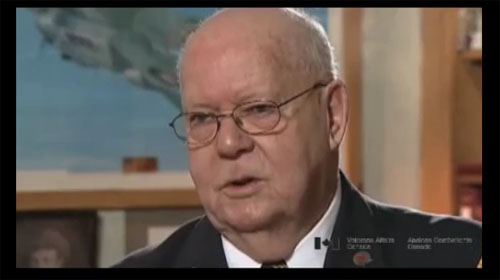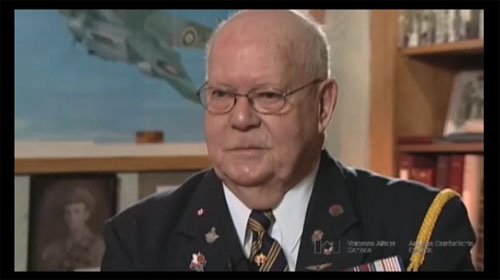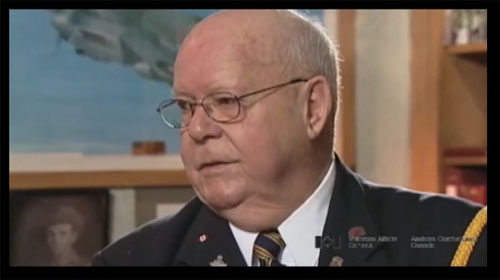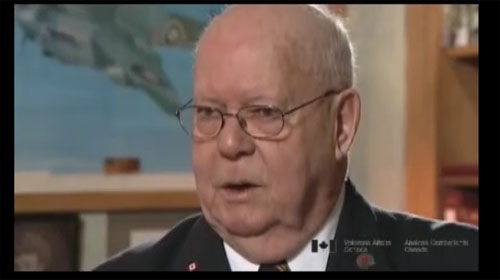It Wasn’t Us
Heroes Remember
It Wasn’t Us
Transcript
Aerial photograph of bombs exploding.
camera took a picture of the target, see. And we were briefed by the briefing and the intelligent people, “Okay we’ve put a special switch in the navigator’s compartment which controls the bombsite.” And the navigator’s responsibility was to turn that switch on so that you bomb the proper place cause they knew that our own troops were underneath. So how we were to get that responsibility was when we crossed the coast ... you’re supposed to take the time. Then there was a canal in the city of Caen or near it. So when you crossed the canal, which was a few miles, you take the time for there and that would give the navigator a chance to figure out your ground speed then you knew how many miles it was to the target. So at that ground speed you knew how long it should take you. And you had a — I forget that actual window of time ... whether it was fifteen seconds or thirty seconds ... I forget which — we were flying about average ground speed of 200mph. So we had a window there that you ... where you got to where you figured that the ... from your calculation that you’re at ... the target you turn the switch. And if nothing happened within that certain time you can switch it off again and have to bring the bombs home. You don’t really bring the bombs home — you take them out to the North Atlantic and drop them before you — ‘cause you can’t land with them. They're live, they’re ready to blow so you jettison into the sea. So there were your instructions and that’s the responsibility that they gave the navigator. So we got (inaudible) my calculations were right. The people behind us dropped bombs and we were wakened up from the trip ... we come back in to have re-interrogation you see. “Can you recognize who was behind you?” What were they? It was the daytime ... can you recognize them so that we can identify who bombed our own troops? But that was the responsibility we had that they gave us to. So that’s why I always have that picture there and say, “No it wasn’t us.” But we were lucky there ... that I happened to do my job that time.Description
Mr. Wickens defends the results of his bombing mission at Falaise gap based on photographic evidence.
Donald Wickens
Mr. Wickens was born in Moosejaw, Saskatchewan. Despite the scarcity of jobs during the depression, he took employment with the Bank of Montreal, where he worked for two years prior to enlisting. Although not initially eager to do so, Mr. Wickens decided to join his friends who had preceded him into the service. Unlike many of his friends, however, he joined the Royal Canadian Air Force with the intention of becoming a navigator, and completed his training in Portage La Prairie. Once overseas, Mr. Wickens became a member of 434 Blue-Nose squadron and took part in 37 bombing and mine laying missions over Northern Europe. He and the rest of his aircrew were decorated after surviving two air attacks in which their aircraft was disabled. After leaving the service, Mr. Wickens returned to the Bank of Montreal. He currently resides in Prince Albert, Saskatchewan.
Meta Data
- Medium:
- Video
- Owner:
- Veterans Affairs Canada
- Duration:
- 2:53
- Person Interviewed:
- Donald Wickens
- War, Conflict or Mission:
- Second World War
- Location/Theatre:
- Europe
- Battle/Campaign:
- Falaise
- Branch:
- Air Force
- Units/Ship:
- 434 Squadron
- Rank:
- Flying Officer
- Occupation:
- Navigator
Related Videos
- Date modified:



